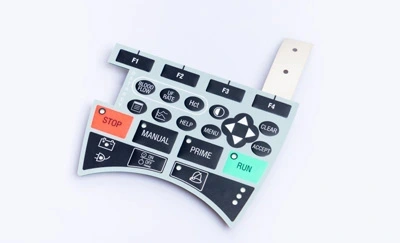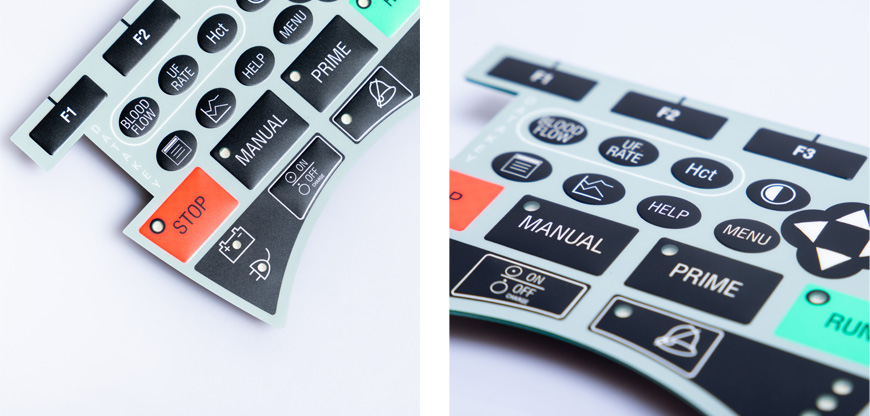
In today's fast-paced technological landscape, innovation has become the driving force behind the creation of increasingly sophisticated electronic devices. Among the many components that play a pivotal role in these devices, the "Rigid Backer Membrane Switch" stands out as a versatile and essential element. In this article, we will delve into the fascinating world of rigid backer membrane switches, exploring their structure, applications, advantages, and more.

At its core, a rigid backer membrane switch is a user interface technology that combines a flexible printed circuit board (PCB) with a rigid substrate. This innovative design allows for a tactile interface, making it a critical component in various industries and applications.
To better understand this technology, let's break down its components:
1. Overlay Layer
The topmost layer, often made of polyester or polycarbonate, features printed graphics and icons.
2. Spacer Layer
Situated beneath the overlay layer, the spacer layer contains openings corresponding to the key locations.
3. Flexible Circuit Layer
This layer houses the conductive traces, often made of copper, that connect the keys to the rigid backer.
4. Rigid Backer Layer
The foundation of the switch, typically constructed from materials like fiberglass or aluminum, adds stability and durability to the assembly.
Rigid backer membrane switches find applications across a wide range of industries due to their versatility and reliability. Here are some notable areas where they excel:
1. Medical Devices
These switches are used in medical equipment like infusion pumps and diagnostic devices, offering ease of use and resistance to harsh cleaning agents.
2. Industrial Control Panels
In industrial settings, these switches are often employed in control panels, providing tactile feedback even in challenging environments.
3. Aerospace and Defense
Rigid backer membrane switches are ideal for aerospace and defense applications, thanks to their resistance to vibration and extreme temperatures.
4. Consumer Electronics
From microwave ovens to TV remote controls, these switches enhance the user experience in everyday electronics.
The widespread adoption of rigid backer membrane switches can be attributed to their numerous advantages:
1. Durability
The rigid backer layer ensures longevity, making these switches capable of withstanding millions of actuations.
2. Customization
Manufacturers can easily tailor the overlay design to meet specific branding and functionality requirements.
3. Tactile Feedback
Users appreciate the tactile response provided by these switches, enhancing the overall user experience.
4. Cost-Effectiveness
Rigid backer membrane switches offer a cost-effective solution for many industries, combining durability with affordability.
As technology continues to evolve, so do rigid backer membrane switches. Some emerging trends in this field include:
1. Integration with Touch Screens
Combining the tactile feel of membrane switches with touch screen capabilities for enhanced user interfaces.
2. Enhanced Backlighting
Utilizing advanced LED technologies to improve visibility and aesthetics in low-light environments.
3. Increased Environmental Resistance
Developing switches that can withstand even harsher conditions, expanding their applications further.
In a world where user interfaces play a crucial role in our daily lives, rigid backer membrane switches have proven to be indispensable. Their durability, versatility, and cost-effectiveness make them a preferred choice across various industries. As technology continues to advance, we can only expect these switches to become more sophisticated and integrated into an even wider array of applications.
Are rigid backer membrane switches easy to clean?
Yes, these switches are designed to withstand cleaning agents commonly used in medical and industrial settings, making them easy to maintain.
Can rigid backer membrane switches be customized for unique applications?
Absolutely! Manufacturers can tailor the overlay layer to meet specific branding and functionality requirements.
Are rigid backer membrane switches compatible with touch screen technology?
Some advanced models integrate touch screen capabilities with the tactile feel of membrane switches for enhanced user interfaces.
How long do rigid backer membrane switches typically last?
These switches are known for their durability and can withstand millions of actuations, ensuring a long lifespan.
What industries benefit the most from rigid backer membrane switches?
Industries such as medical devices, industrial control panels, aerospace, defense, and consumer electronics find these switches highly beneficial due to their reliability and versatility.